The story of PRS's short-lived Classic Electric
The Fiore is PRS’s latest bolt-on guitar, but this story began back in 1988 with the short-lived Classic Electric
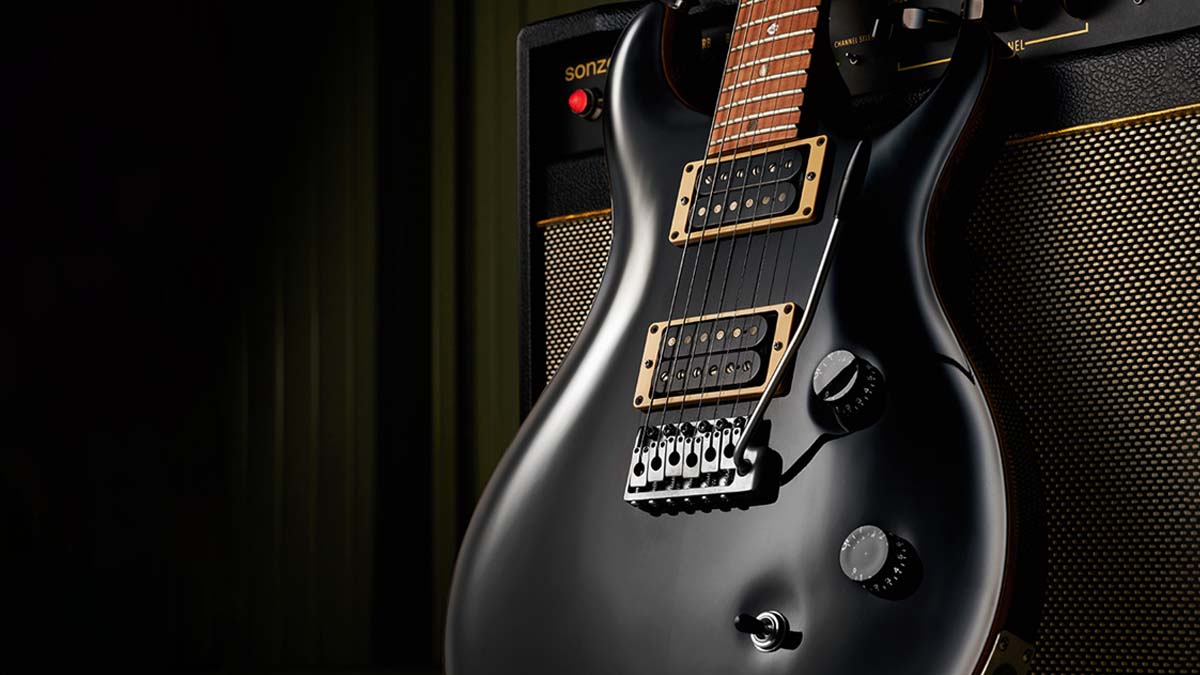
It was 1988 and PRS had been in business for barely three years, gaining a reputation for a return to a high-quality and quite classic style in a market that still seemed obsessed with Floyd Rose locking vibratos. Its instruments had also been labelled as expensive.
Known for the time-honoured Gibson formula of mahogany and curly maple with glued-in necks, PRS launched the Classic Electric in ’88 with the aim of both a more affordable bolt-on electric guitar and one that was advertised as “Maple and Alder: bolt-on traditional feel with a sound of its own.”
Not only were the woods different, there were opaque finishes only, no maple tops and no bird inlays. It was a different PRS and one that confused the market. The name was swiftly abbreviated, by 1989, to CE (and later CE 24) after Peavey objected to the word Classic, maple tops were added, birds appeared, plus a black-faced headstock with a signature logo.
By August of 1994 the body wood changed from alder to mahogany and the CE became a slightly more affordable bolt-on Custom rather than a more Fender-flavoured PRS. The original maple/alder Classic Electric, however, didn’t feature the sort of coil-splits we’re used to today.
The two ‘vintage’ humbuckers (both with the same output, so we can only assume these were the initial versions of what became the Vintage Treble and Vintage Bass humbuckers) could be voiced individually or, in the centre position of the toggle selector, the inside slug coils of both humbuckers in series.
Our pictured guitar is modded so you can hear the potential with partial coil-splits and there’s a lot more Fender flavour at the neck, not to mention a more snappy, percussive voice. You can really hear that difference A/B’ing the original with the current CE 24, reintroduced in 2016.
The Regular neck shape back then is nearly identical dimensionally to the Fiore at the nut, with a similar depth to both the Silver Sky and Fiore at the 1st fret and only marginally slimmer by the 12th. It’s slightly more V’d than either the Fiore or especially the Silver Sky, which both feel fuller in the hand. Yet, rather like the Fiore, that original Classic Electric comes across as a similar hot-rod-style PRS, a child of the times.
Get The Pick Newsletter
All the latest guitar news, interviews, lessons, reviews, deals and more, direct to your inbox!
“When I go to an in-store signing, people that bring their CEs say how much they love them,” said Paul Reed Smith in 2016. “They’ve worn all the finish off the neck. To them, it’s a PRS and it’s an old workhorse. That guitar always had merit.”
Today, you can bag a used example for a lot less than a Custom from the same year or earlier. Our advice? Do it. These CEs are real sleepers with bags of charm and character.
PRS Classic Electric: the details
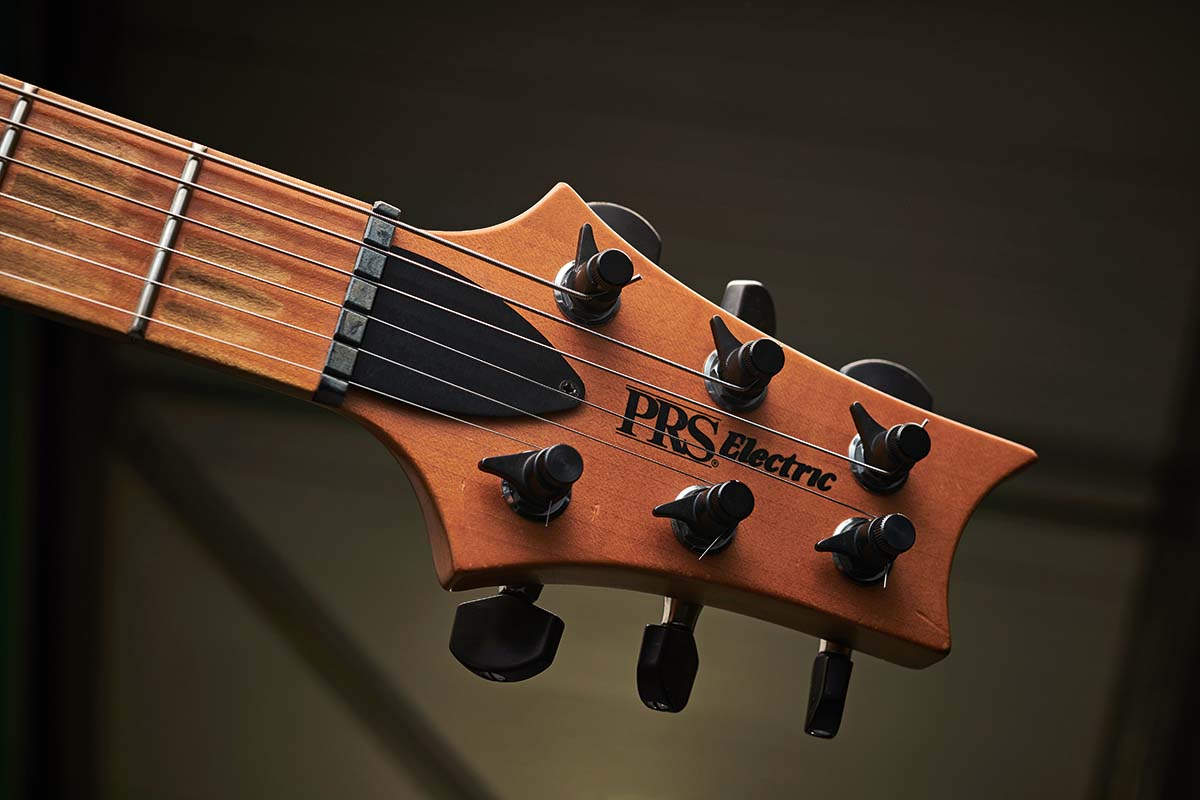
Logo
This PRS Electric logo was used fleetingly and illustrates the early confusion. Was it Paul Reed Smith, as the signature logo stated on the Custom, or PRS as here? Our sample has the original cam-locking tuners (the buttons have been changed to ebony). The neck is also quarter-sawn maple with quite a toned nitro finish, which has got a little darker over time.
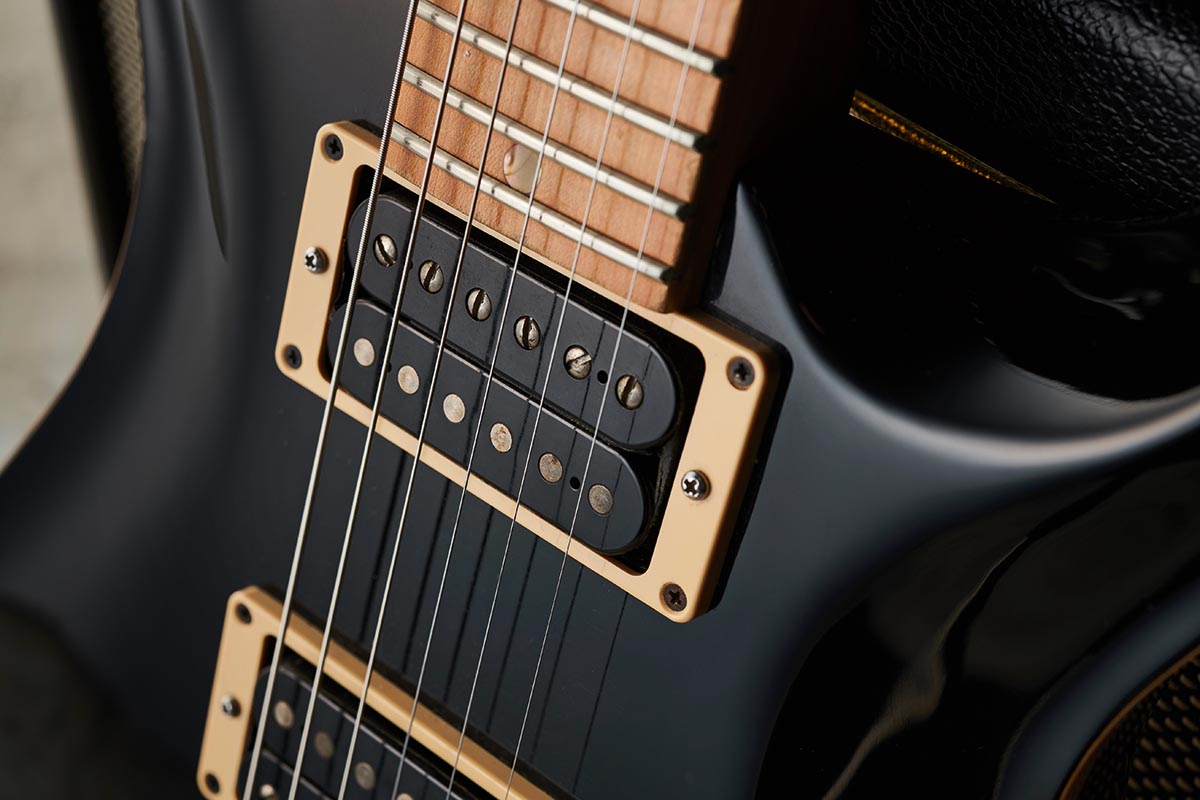
Humbuckers
These early humbuckers have no ID on the nickel-silver baseplates and have identical DCRs of 8.14kohms measured at output. On the original product flyer they were simply called “PRS vintage pickups.”
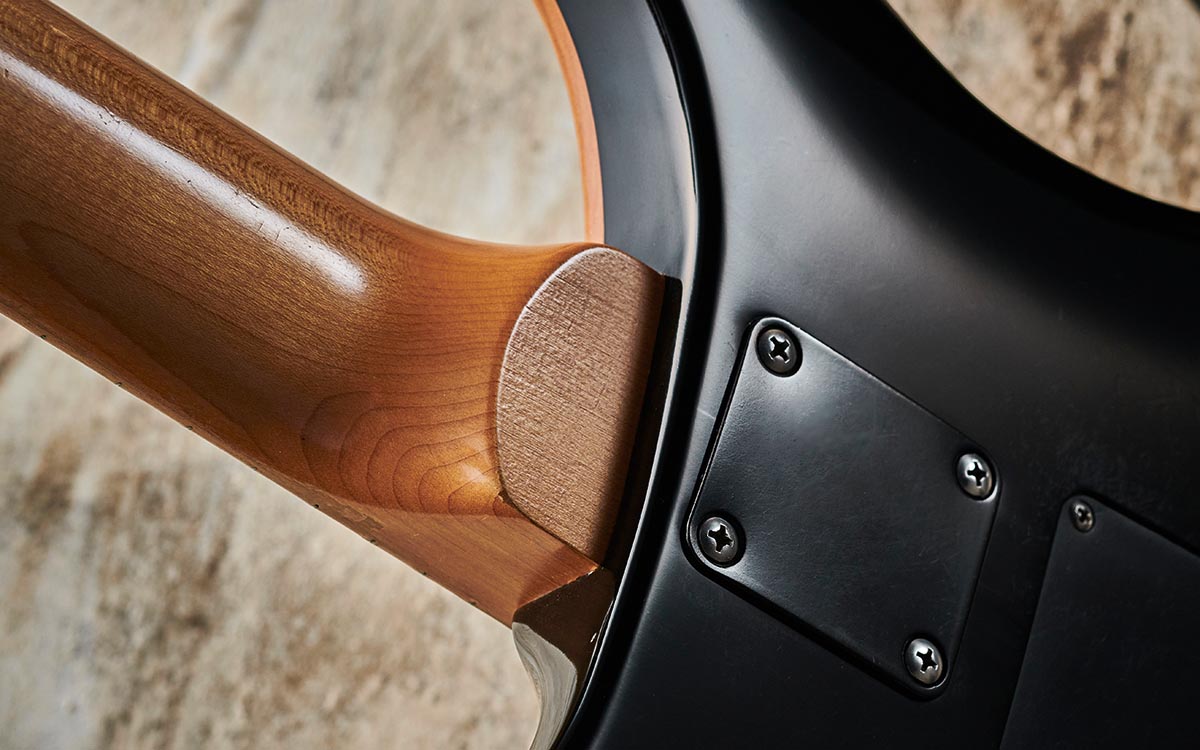
Neck
Although the neck wood changes here, the join is the same – in terms of machining – as the glued-in Custom, where the neck extends under the neck pickup but is screwed on. The same style is used on the modern CE 24, although the Silver Sky and Fiore use the conventional Fender-style neck that sits in its neck pocket.
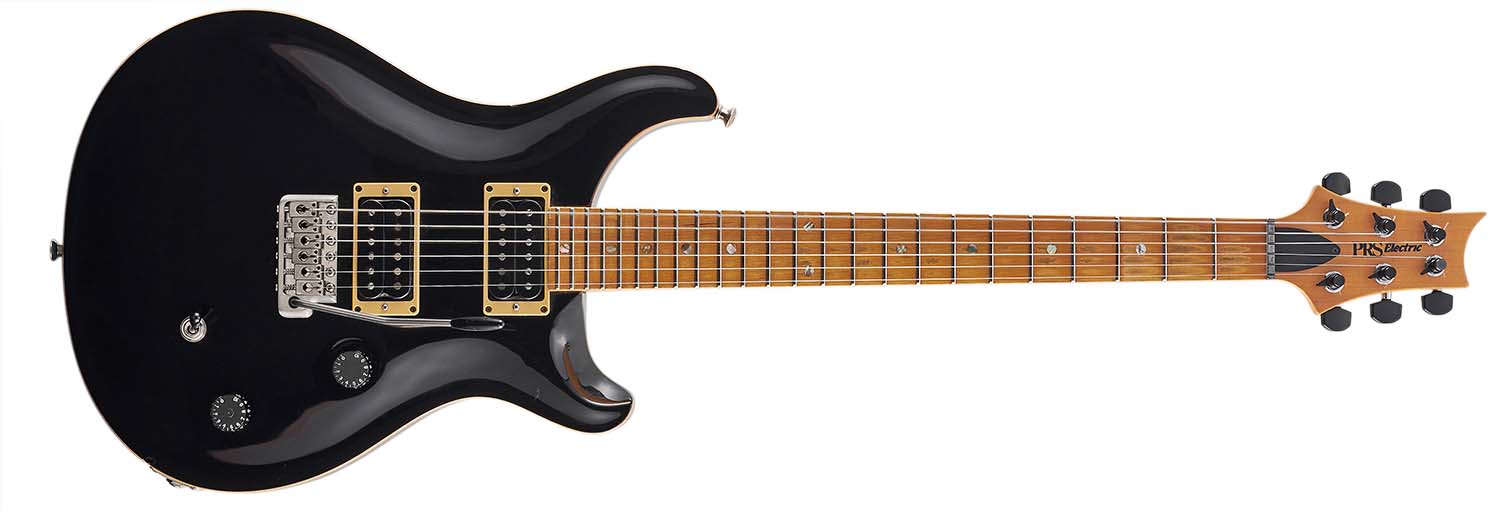
Vibrato
These early vibratos were made by John Mann and are now the stuff of legend. Unlike the modern two-piece designs, these were one-piece casting from brass, which was then machined. Along with the friction-reducing nut and locking tuners, it remains a remarkably stable, in-tune guitar three decades on.
Inlays
Instead of using Fender’s protocol of black dots on maple, PRS’s dots here were abalone, which gives poor contrast. The side dots were originally a light silver in colour and also really disappeared under the toned nitro finish. Here, they were replaced with black dots by the luthier Sid Poole when he did the refret.
Wiring
The original guitar featured a mini-toggle switch with a large chrome tip. Many failed in use and were replaced with a conventional three-way toggle switch, as here. The original wiring gave us those series linked single coils, although here a standard wiring is used but with a push-push switch on the tone to split the pickups.
In fact, this guitar uses partial splits adjustable via trim pots (accessed through the rear cavity cover). It was a concept suggested by Brinsley Schwarz who then worked at Chandler Guitars, PRS’s original distributor in the UK.

Dave Burrluck is one of the world’s most experienced guitar journalists, who started writing back in the '80s for International Musician and Recording World, co-founded The Guitar Magazine and has been the Gear Reviews Editor of Guitarist magazine for the past two decades. Along the way, Dave has been the sole author of The PRS Guitar Book and The Player's Guide to Guitar Maintenance as well as contributing to numerous other books on the electric guitar. Dave is an active gigging and recording musician and still finds time to make, repair and mod guitars, not least for Guitarist’s The Mod Squad.
“It holds its own purely as a playable guitar. It’s really cool for the traveling musician – you can bring it on a flight and it fits beneath the seat”: Why Steve Stevens put his name to a foldable guitar
“Finely tuned instruments with effortless playability and one of the best vibratos there is”: PRS Standard 24 Satin and S2 Standard 24 Satin review










